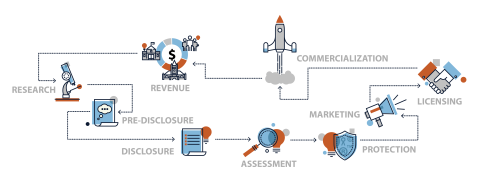
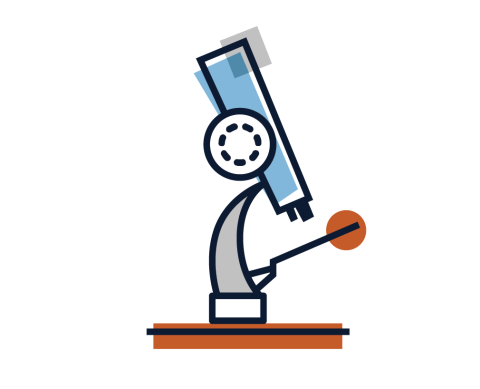
Research
Observations made and experiments conducted as part of a research program often lead to discoveries and innovations that can have significant value to larger audiences, including commercial value. In many cases, multiple researchers may have contributed to the innovation. In this guide, we refer to the singular innovator or inventor with the understanding that there may be more than one.
One of your first opportunities to contact UNHI is during (or even before) the initial phase of your research endeavor. You will be assigned a licensing manager from UNHI who will provide guidance on best practices for protecting your research and will start to lay the foundation for potential commercialization.
There are significant legal implications to publicly communicating your research or innovation, so it is important to advise UNHI well in advance of any public disclosure. Once publicly disclosed, your research or innovation may have limited or no potential for legal protection. Public disclosure to members outside of the UNH community (even if it occurs at UNH) could include: a scientific presentation, lecture, poster, abstract, website post, proposal submission, dissertation/thesis, public presentation, or even a detailed conversation about the innovation. Generally, once an innovation has been protected (e.g., by filing a patent application), publication or public disclosure can occur.
Whether a grant or contract from a federal agency, a foundation, or an industry partner, the funding terms and conditions for a research project sponsored by a third party should specify the IP rights of the sponsor. In almost all instances, the university will retain ownership of the patent rights and other IP resulting from sponsored research. However, the sponsor may have rights to obtain a license to the defined and expected outcomes of the research. Often, sponsored research agreements allow the sponsor a limited time to negotiate a license for any patent or IP rights developed as the result of the research. Even so, the sponsor generally will not have contractual rights to discoveries that are clearly outside of the scope of the research, so it’s important to define the scope of work within a research agreement.

Disclosure
Submitting a disclosure of your innovation to UNHI is the first formal step in obtaining proper IP protection and commercializing your innovation. You are strongly encouraged to submit innovation disclosures early in the development process to avoid any potential problems.
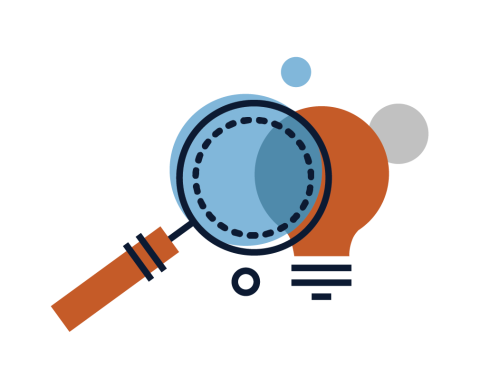
Assessment
Innovation assessment is the period in which you and your UNHI licensing manager review the innovation disclosure, conduct searches for conflicting patents or trademarks (as applicable), and analyze the market and competitive landscape to determine the innovation’s commercialization potential. This evaluation process will guide our strategy for how to best protect and commercialize your innovation. Commercialization may result in licensing the innovation to an existing company or creating a new business.
UNHI will work with you to develop the appropriate commercialization strategy for the innovation. Some innovations lend themselves to non-exclusive licensing (licensing to multiple third parties), including through fee-based licenses, open source licenses, or Creative Commons licenses. Other innovations will only reach the commercial marketplace and the public if they are licensed on an exclusive basis. We will try to accommodate innovators’ commercialization wishes. However, the final decision will be determined by our assessment of which strategy will produce the most benefits for the general public, consistent with government or institutional policies and other obligations.
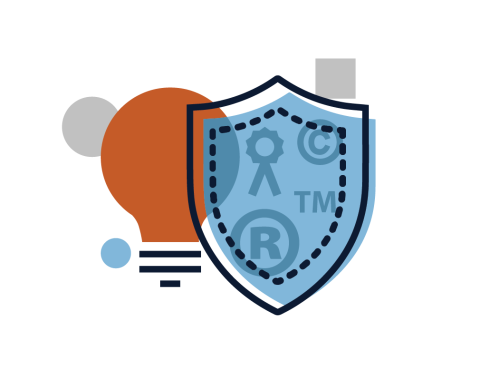
Protection
Protecting the rights of those who create IP is a high priority for UNHI. Common IP protection methods include patents, copyrights, and trademarks, but could also include contractual use restrictions (e.g., for databases and materials). IP protection may not always be possible or necessary, and the legal costs may outweigh the benefits. We will work with you to determine the best course of action during the innovation assessment. The managing director of UNHI makes the final decision as to whether to file a patent or trademark application or seek another form of protection.
Note: Patents, by legal definition, are for inventions, so we refer to inventions and inventors instead of innovations and innovators in this section.
In the U.S., a patent gives the holder the right to exclude others from making, using, selling, offering to sell, and importing the patented invention. Patent claims are the legal definition of an inventor’s protectable invention.
Universities have legal, policy, and contractual requirements to evaluate and potentially pursue patent protection for inventions developed using federal and corporate funds. In some cases, patent rights are licensed to a company following research support and can be an important way to establish effective collaboration with industry. Patents can also be a critical element for a company to invest in when commercializing research results for use by the public.
Patentable inventions must be new, useful, and non-obvious. There are three types of patents:
1. Design patents:
Design patents protect non-functional, novel designs for an article of manufacture.
2. Plant patents:
Plant patents protect new and distinct asexually reproducible plant varieties.
3. Utility patents:
Utility patents protect any new and useful process, machine, manufacture, composition of matter, article, or any new or useful improvement thereof. They are the most common form of patent protection.
Even if an invention is new, useful, and non-obvious, it is not guaranteed to be eligible for patent protection. Certain public disclosures or other events that might occur prior to filing a patent application can disqualify the patentability of an invention. An invention can be disqualified if an inventor discusses enough information about the invention for someone to be able to reproduce it. This could be in a journal publication, presentation at a conference, posting on a website, or even discussions with scientists from other academic institutions. An invention, including asexually reproduced plants, can also be disqualified if it was sold, offered to be sold, used or displayed in public, or if a previous patent application was filed.
This is not an exhaustive list of potential disqualifications and it is important to work with UNHI early to ensure that the maximum opportunities for your invention are preserved.
The total cost to file a U.S. patent usually ranges from $10,000 to $15,000, and can frequently be two to three times higher. Costs to obtain foreign patents may be five to ten times higher, depending on the number of countries where applications are filed. Often the university accepts the risk of filing a patent application before a licensee has been identified. After university patent rights have been exclusively licensed to a licensee, the licensee reimburses past patent expenses and supports all future costs.
If UNHI decides to seek patent protection, there is no personal financial investment required of the innovator. UNH allocates funds each year to support IP protection.
Submitting a disclosure to UNHI is the first step in obtaining proper IP protection, but it is not part of the official patent process. Care must be taken to avoid public disclosure until a patent application is officially filed.
Once the innovation assessment has been completed and a decision has been made to pursue patent protection, a patent attorney will work with UNHI and the inventor to draft and file the patent application. A well-drafted patent application must have substantial input and participation from the inventor.
Once an application is filed, a patent examiner will determine whether the application meets the three main requirements of patentability: usefulness, novelty, and non-obviousness.
The entire patent examination process generally takes 2-4 years from the filing date to completion, but may take longer in certain technical fields.
A trademark or service mark includes any word, name, symbol, logo, sound, color, smell, or any combination, used or intended to be used to identify and distinguish the goods or services of one seller or provider, and to indicate the source of the goods or services. Trademarks can be licensed, sold, donated, and abandoned. A trademark does not prevent others from producing similar goods or services.
1.) Be the first to use the trademark in commerce. In order for a trademark to be in “use,” the good or service that the trademark represents has to be used in interstate commerce. You can also gain priority to a mark by filing an “intent to use” trademark application with the U.S. Patent and Trademark Office (USPTO).
2.) Be the first to gain registration of the mark with the USPTO.
Federal registration is not required to gain rights in a trademark, but an owner of a registered trademark gets the right to use the mark nationwide and it is constructive notice (a legal term meaning that people are assumed to have knowledge of something simply because it’s in the public record) that the party owns the trademark. Additionally, to bring a lawsuit in federal court for infringement, the party claiming infringement must have a federal registration.
If you choose not to register your trademark but your unregistered trademark is distinctive and identifies or distinguishes your products or services, you will still have some legal rights to stop someone from using the trademark without registration, but only within your geographic area of operation. If you want to protect your trademark but don’t want to register, you may use the unregistered trademark symbol—the letters ‘TM’. Using the unregistered trademark symbol indicates you have not registered the mark but are giving notice of your rights.
A trademark registration may cost between $1,300 and $2,000.
If UNHI decides to seek trademark protection, there is no personal financial investment required of the innovator.
An application usually takes between 12 and 18 months.
Not every mark may be registered with the USPTO, and some marks may not be entitled to a legal claim that others should stop using a similar mark. Some marks may be difficult or impossible to register and/or protect. For example, the mark may not be distinctive enough: “Cereal” describes the contents of the box, and will likely be denied registration, while “Fruity O’s” is more distinct and stands a better chance of registration. Registration may be denied because a mark is confusingly similar to another registered trademark: “Amazone,” a hypothetical online retailer, is more likely to be denied registration. UNHI will work with you to determine if your mark is registrable.
A copyright is a form of IP protection provided by the laws of the United States to creators of “original works of authorship,” both published and unpublished. The Copyright Act gives the owner of copyright the exclusive right to reproduce, distribute, publicly display, publicly perform, and create derivatives of the creator’s work. Copyrights may be licensed, sold, donated, and litigated.
Many things are protectable by copyright, including literary works, music (and its lyrics), movies and plays (and their music, choreography, and blocking), pictures, graphic designs, sculptures, architectural works, and software.
No, federal copyright registration is not required. Copyright protection is automatic as soon as the work is fixed into a tangible medium. However, registration is necessary to file a copyright infringement action to protect your content. If you win your infringement action, registration also may entitle you to a cash award for the infringement.
Registration costs between $35-$400, excluding legal fees.
If UNHI decides to file for copyright registration, there is no personal financial investment required of the innovator.
The copyright owner has a bundle of exclusive rights:
Reproduction Right: The right to make copies
Adaptation Right: The right to make or allow others to make derivatives, or add their own creative elements to your work
Distribution Right: The right to distribute copies of the work to the public
Public Performance Right: The right to perform the work in public
Public Display Right: The right to display copies of the work to the public
The copyright owner has the right to separate out any of these rights when granting permissions to others.
Including a notice informs the public that a work is protected by copyright, identifies the copyright owner so that it’s easier to ask for permission to use the work, and shows the year of first publication. It informs the public that the work is not in the public domain, and positions the author as a subject matter expert. A notice also helps the author control how others make use of the work and maintain fidelity to the research that created the work.
For works owned by the university, use the following template:
[© Year of first publication] University of New Hampshire.
For example: © 2017 University of New Hampshire. All Rights Reserved.
Fair use is a defense to infringement and not something you can automatically assume applies to your work.
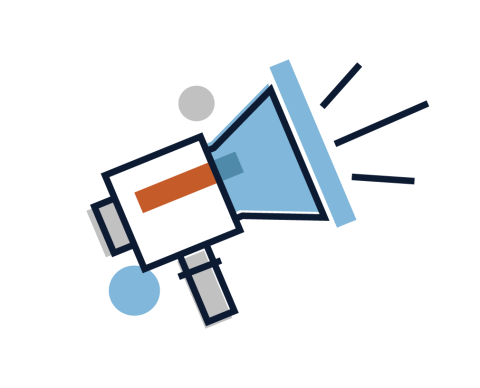
Marketing
There are two primary avenues UNHI pursues to get your ideas into the market:
2) Find a third-party licensee
Create Your Own Company and license the innovation
With some innovations, an entirely new business might create the greatest opportunities. We can connect you to other innovators and entrepreneurs with experience in start-up formation and guide you through the process of planning and funding your new business.
A start-up is a new business entity formed to commercialize one or more related innovations. Forming a start-up company is an alternative to licensing the IP to an established business. We can help you create a company that complements your position at UNH and is aligned with relevant UNH policies.
- Refine the business proposition
- Recruit business talent
- Establish the company
- Obtain legal rights to the innovation
- Manage your university and start-up responsibilities by exploring potential conflicts of interest
- Development risks (Companies in established industries are often unwilling to take the risk.)
- Development costs versus investment return (Can investors obtain their needed rates of return?)
- The potential for multiple products or services from the same technology (Few companies survive on one product.)
- Competitive advantages
- Target market size (Is it large enough?)
- Potential revenue (Will revenue be sufficient to sustain and grow a company?)
- Business management experience (accounting, sales, marketing, etc.)
Finding a Third-Party Licensee
With your involvement, UNHI can seek candidate organizations that have the expertise, resources, and business networks to bring your innovation to market. Each innovation may be at a different development stage, and with your help, we identify existing opportunities in the marketplace where your innovation might be a good fit. If there is interest in the innovation, we’ll begin negotiations to enter into a licensing agreement with the third party. Sometimes expansive licenses, such as open source or Creative Commons, are appropriate, but many times the public is better served through traditional fee- and/or royalty-bearing licenses with a third party.
Studies show that 70% of licensees are already known to the innovators, so your network is a valuable source of possible licensees. Licensees are also identified through existing relationships of our team. UNHI will broaden these relationships through contacts obtained from website posting inquiries, market research, industry events, and by cultivating existing relationships. Market research can help in identifying prospective licensees and we also examine other complementary innovations and agreements. We use our website to post innovations, leverage conferences and industry events, and make direct contacts. Faculty publications and presentations are great marketing tools.
It can take months or even years to locate a licensee, depending on the attractiveness of the innovation, its stage of development, competing technologies, and the size and intensity (buying power) of the market. Many university innovations are in the early stage of the development cycle. Additional development efforts may be required for commercialization, either by the innovator, a licensee, or even a partnership between the parties.
Yes! Your active involvement can dramatically improve the chances of matching an innovation to an outside company. Your research and consulting relationships are often helpful in both identifying potential licensees and innovation champions within companies. Once we identify interested companies, the innovator is the best person to describe the details of the innovation and its technical advantages. Collaboration between the innovator and the licensing manager yields the best marketing results.
Some innovations are licensed exclusively to a single organization. Other innovations can be licensed to multiple licensees, either non-exclusively to several organizations, or even exclusively to several organizations for a unique application or geography. The final decision will be determined by our assessment of which strategy will produce the most benefits for the general public, consistent with governmental or institutional policies and other obligations.

Licensing
Once a licensee has been identified, UNHI will negotiate and complete the license agreements.
A license agreement is a formal contract between the owner of IP and another party. The owner grants permission to use that IP, usually for a specific period and objective. Regardless of the innovation, there are standard terms included in each license agreement to protect the interests of the innovator, the innovation, the institution, and the federal government (if applicable). We will work with you in the development of an appropriate commercialization strategy for the innovation and negotiate the terms of the agreement with the licensee. We manage the license agreement for UNH over its lifetime, including collecting license deliverables such as licensee commercialization reports and payments.
A license agreement describes the rights and responsibilities related to the use of IP developed at the university. University license agreements usually stipulate that the licensee should diligently seek to bring the IP into commercial use for the public good and provide a reasonable return to the university.
Many licensees require the active assistance of the innovator to facilitate their commercialization efforts, at least at the early stages of development. This can range from infrequent, informal contacts to a more formal consulting relationship. Working with a new business start-up can require substantially more time, depending on your role in or with the company and your continuing role within the university.
Non-Disclosure Agreements (NDAs) are used to protect the confidentiality of an innovation during evaluation by potential licensees. NDAs also protect proprietary information of third parties that university researchers need to review in order to conduct research or evaluate research opportunities. UNHI enters into NDAs for proprietary information shared with parties outside of the university.
Material Transfer Agreements (MTAs) are used for incoming and outgoing materials (such as reagents, cell lines, designs, blueprints, equipment, etc.) at the university. These agreements describe how university and outside researchers may share materials, typically for research or evaluation purposes. MTAs also address critical issues such as compliance with institutional policies, safety, export controls, and IP rights.
NDAs and MTAs are administered by UNH’s Office of Contracts and Export Control.

Commercialization
After a license agreement has been signed, the licensee continues the advancement of the innovation and makes other business investments to develop the product or service. This step may include further development, securing regulatory approvals, sales and marketing support, training, and other activities.
Your role can vary depending on your interest and involvement, the interest of the licensee in using your services for various efforts, and any contractual obligations related to the license or personal agreements.
License agreements typically include performance milestones that can result in termination of the license if unmet. This termination allows the innovation to be licensed to another business.

Revenue
Revenues received by the university from licenses are distributed to the innovator(s) as a personal recognition and to the college(s) of the innovator(s), the Office of the Senior Vice Provost for Research (SVPR), and to UNHI. Collectively, the revenues fund additional research and education and encourage further participation in the innovation and commercialization process.
UNHI is responsible for managing the expenses and revenues associated with licensing agreements. Per the UNH IP Policy, revenues from license fees, royalties, and equity (minus commercialization-related expenses such as unreimbursed patenting, marketing, and administrative costs) are shared as follows:
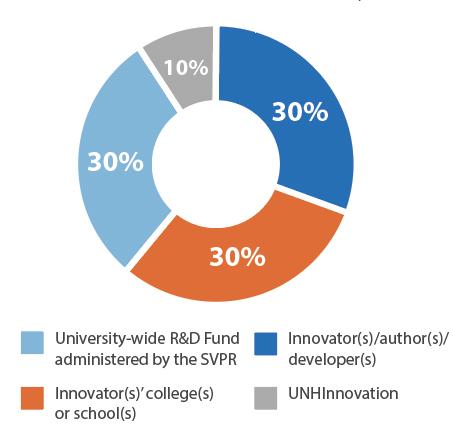
Most taxpayers report personal income received from license revenues on IRS form 1099-MISC, Schedule E. You should consult a tax advisor for specific advice.
In rare instances, UNHI will consider this request provided the written agreement to waive revenues is completed prior to entering any licensing discussions. Due to potentially significant tax implications, UNH considers this decision irrevocable.
When UNHI develops a license agreement, we create a revenue distribution plan to document how to distribute subsequent revenues. If the licensed innovation(s) was developed by more than one innovator, each of the innovators share in the revenue distribution equally unless we are informed otherwise during the innovation disclosure process. If the innovators are unable to agree on a revenue distribution plan, UNHI will make the final revenue allocation decision before any revenue is generated.